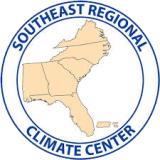Next month’s Southeast Monthly Climate Webinar is on Tuesday, June 8 at 10 a.m. Eastern, with a special presentation on the 2021 Hurricane Outlook. Register here for upcoming webinars.
Climate Conditions and Outlooks
- April temperatures were near average with pockets of above average, and a late season freeze at the end of April.
- April precipitation was slightly below average to the north, slightly above average to the south, and below average in Puerto Rico.
- April severe weather included soft-ball sized hail in Alabama on April 10, and two EF-2 tornadoes in Florida and Georgia.
- A La Niña Advisory is still in effect, but will likely transition to neutral conditions during the spring (80% chance May–July). The next update will be on May 13.
- Tropical Update: Prepare now for Hurricane Season. Preliminary outlooks suggest it will be another active season.
- Looking Ahead: The next 6–10 days have a higher probability of cooler temperatures for most of the Southeast, and wetter/warmer conditions for southern Florida. The next three months will likely be warm and wet.
- Drought Conditions: Severe Drought (D2) is present in the U.S. Virgin Islands, with short-term Moderate Drought (D1) in Puerto Rico and southern Florida, and Abnormally Dry (D0) conditions in Georgia, South Carolina, and North Carolina.
- Looking Ahead: Further drought development is possible in the eastern Carolinas and Puerto Rico. Flash drought likelihood is low, but should still be watched.
Current U.S. Drought Monitor map for the Southeast, as of May 4, 2021. The U.S. Drought Monitor (USDM) is updated each Thursday to show the location and intensity of drought across the country. Drought categories show experts’ assessments of conditions related to dryness and drought including observations of how much water is available in streams, lakes, and soils compared to usual for the same time of year.
Short-term Moderate Drought (D1) is present in Florida, with Abnormally Dry (D0) conditions in Georgia, North Carolina, and South Carolina.
Current U.S. Drought Monitor map for Puerto Rico, as of May 4, 2021. The U.S. Drought Monitor (USDM) is updated each Thursday to show the location and intensity of drought across the country. Drought categories show experts’ assessments of conditions related to dryness and drought including observations of how much water is available in streams, lakes, and soils compared to usual for the same time of year.
Abnormal Dryness (D1) and short-term Moderate Drought (D1) conditions are present in Puerto Rico.
Current U.S. Drought Monitor map for the U.S. Virgin Islands, as of May 4, 2021. The U.S. Drought Monitor (USDM) is updated each Thursday to show the location and intensity of drought across the country. Drought categories show experts’ assessments of conditions related to dryness and drought including observations of how much water is available in streams, lakes, and soils compared to usual for the same time of year.
Severe Drought (D2) conditions are present on St. John, St. Thomas, and St. Croix.
U.S. Drought Monitor Categories
Current U.S. Drought Monitor map for the Southeast, as of May 4, 2021. The U.S. Drought Monitor (USDM) is updated each Thursday to show the location and intensity of drought across the country. Drought categories show experts’ assessments of conditions related to dryness and drought including observations of how much water is available in streams, lakes, and soils compared to usual for the same time of year.
Short-term Moderate Drought (D1) is present in Florida, with Abnormally Dry (D0) conditions in Georgia, North Carolina, and South Carolina.
Current U.S. Drought Monitor map for Puerto Rico, as of May 4, 2021. The U.S. Drought Monitor (USDM) is updated each Thursday to show the location and intensity of drought across the country. Drought categories show experts’ assessments of conditions related to dryness and drought including observations of how much water is available in streams, lakes, and soils compared to usual for the same time of year.
Abnormal Dryness (D1) and short-term Moderate Drought (D1) conditions are present in Puerto Rico.
Current U.S. Drought Monitor map for the U.S. Virgin Islands, as of May 4, 2021. The U.S. Drought Monitor (USDM) is updated each Thursday to show the location and intensity of drought across the country. Drought categories show experts’ assessments of conditions related to dryness and drought including observations of how much water is available in streams, lakes, and soils compared to usual for the same time of year.
Severe Drought (D2) conditions are present on St. John, St. Thomas, and St. Croix.
Water Resources and Summer Flood Outlook
- Streamflows are mostly normal across the region, though some are above normal in Alabama, Georgia, and the Florida Peninsula, and some are below normal in the Carolinas.
- Looking Ahead: The Summer Flood Outlook calls for typical river flooding, which from May to June is fairly minimal and isolated.
Agriculture Impact and Outlook
- Earth Day frost caused losses to vineyards and apples.
- Heavy rains in southern Georgia and the Florida Panhandle washed out some crops, leading to replanting and potential disease pressure, as well as delays in planting peanuts.
- Hail in the same system caused damage to vegetables and other crops.
- Looking Ahead: Cooler temperatures next week will slow crop development.
The U.S. Drought Monitor
- Importance of continuity: The current U.S. Drought Monitor builds off the previous week.
- Convergence of evidence: Multiple indicators, including impacts, are weighed, and various sectors are engaged to depict the most accurate snapshot of drought.
- Common drought indicators for the Southeast: Standardized Precipitation Index (SPI), soil moisture, and 28-day average streamflows.
- Short and long-term drought are depicted using percentiles for Dx-level.
- For more information, view current U.S. Drought Monitor maps, learn about the Drought Monitor process, or sign up for alerts when Drought Monitor conditions change for your location.
Submit Local Drought Impacts
- U.S. Drought Monitor authors rely upon local/state/regional experts for weekly input into the map.
- Condition Monitoring Observer Reports (CMOR) is one process where citizen science and crowdsourcing can be utilized to help communicate on-the-ground conditions to those that are monitoring drought conditions and impacts.
- Of particular interest are photos from different locations, and continuous submissions from the same person to understand how that place changes over time.
- Submit reports from your computer or mobile phone. To submit mobile reports, download the Survey123 field app.
- Reports include a dry-to-wet scale, impact checklists, and photo upload.
- Find additional information, including CMOR map, tutorials, fact sheets, and social media resources, on the CMOR website.
What Happened: Southeast Temperature
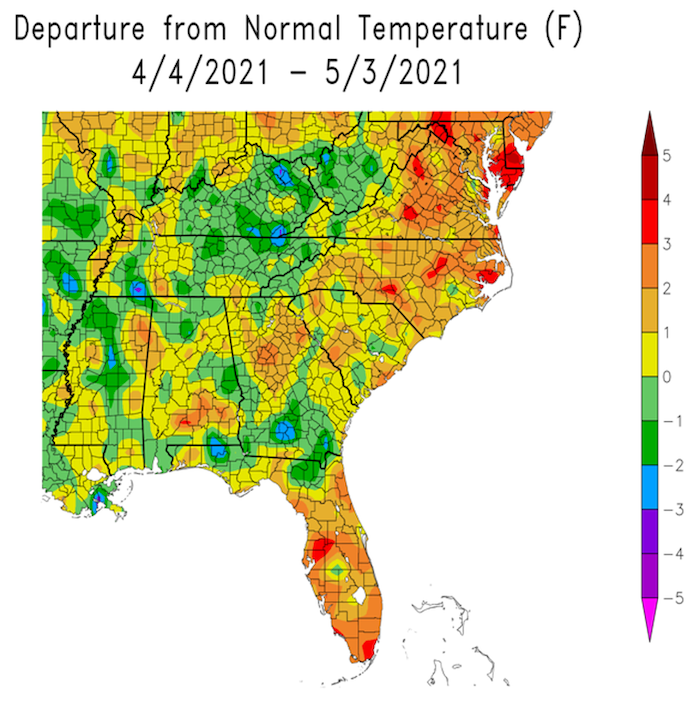
What Happened: Southeast Precipitation
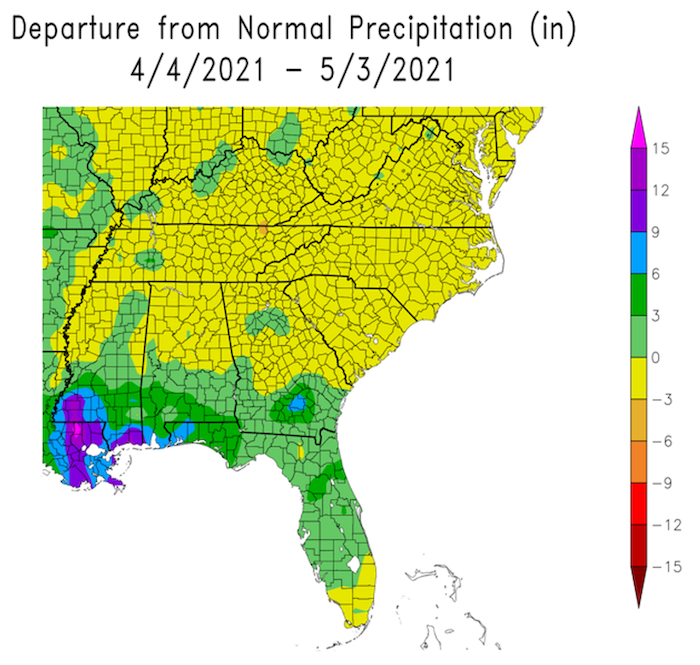
Current Conditions: River Flood Status
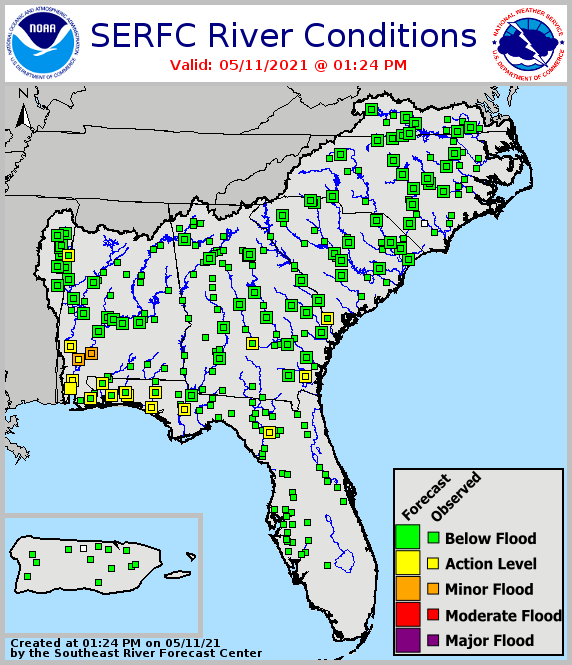
Looking Ahead: Summer Flood Outlook
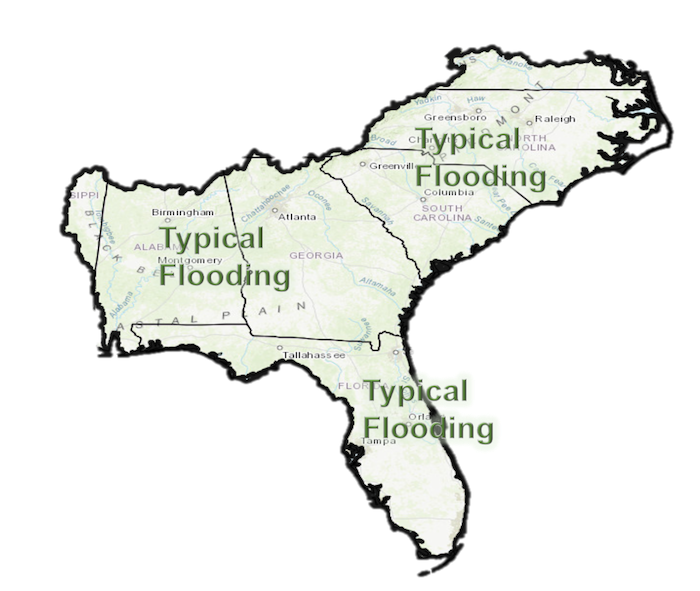
Looking Ahead: Seasonal Outlooks
Temperature Outlook: May-July 2021
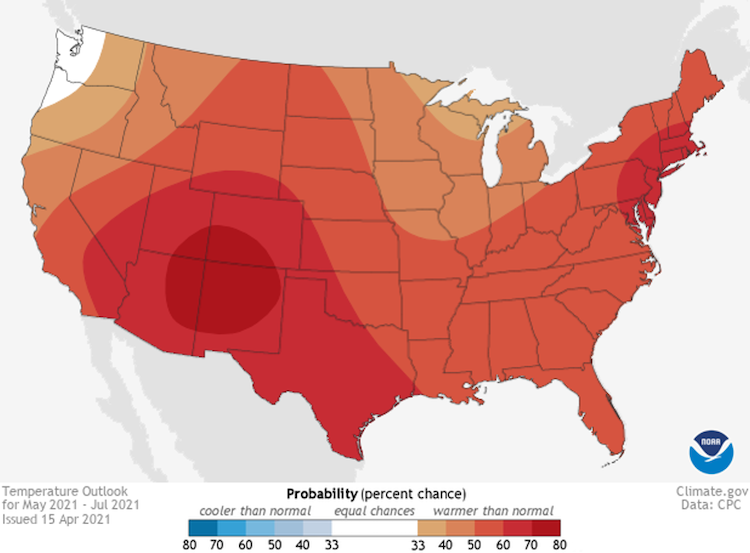
Precipitation Outlook: May-July 2021
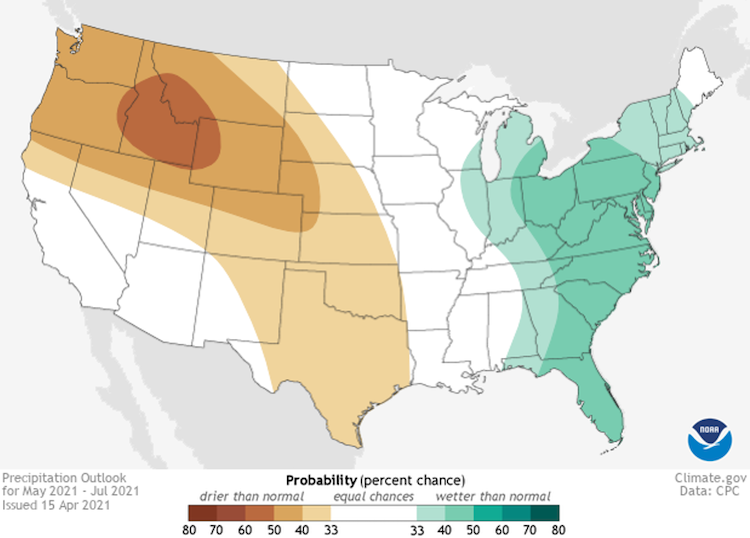
Acknowledgments
Webinar Speakers
- Sandra Rayne, Southeast Regional Climate Center
- Todd Hamill, National Weather Service Southeast River Forecast Center
- Pam Knox, University of Georgia
- Brad Pugh, NOAA Climate Prediction Center
- Kelly Smith, National Drought Mitigation Center
Relevant Regional Resources
Southeast Regional Climate Center (SERCC)
National Weather Service Southeast River Forecast Center (SERFC)
Streamflow Monitoring & Forecasting
National Weather Service Climate Prediction Center: Outlook Products
ACIS Climate Maps, High Plains Regional Climate Center
The Southeast Climate monthly webinar series is held on the second Tuesday of each month at 10:00 a.m. ET. This series is hosted by the Southeast Regional Climate Center, in partnership with the National Integrated Drought Information System (NIDIS) and the NOAA National Weather Service. These webinars provide the region with timely information on current and developing climate conditions such as drought, floods and tropical storms, as well as climatic events like El Niño and La Niña. Speakers may also discuss the impacts of these conditions on topics such as agriculture production, water resources, wildfires and ecosystems.
For webinar-related questions or suggestions, please contact Meredith Muth (meredith.f.muth@noaa.gov).


